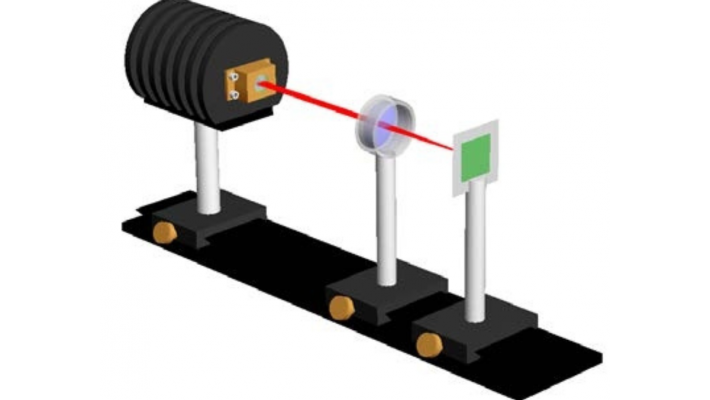Blog


Understanding Laser Diode Modeling with FRED Software
Laser diodes are essential components in many optical systems, and accurately modeling their behavior is crucial for designing effective optical devices. FRED software offers a range of modeling options for laser diodes, from simple Gaussian modes to complex mixed-mode distributions. In this blog post, we'll explore different laser diode models available in FRED and their applications.
Introduction to Laser Diode Modeling
FRED software provides flexible and comprehensive tools for modeling laser diodes. The models range from basic Gaussian modes to more detailed representations, including astigmatism and multimode distributions. Here's an overview of the key modeling methods available:
Example 1: Gaussian 00 Mode
The simplest model is the Gaussian TEM0,00,00,0 mode, which represents a collimated grid of rays with a Gaussian irradiance profile at the beam waist. This model is ideal for low-divergence beams.

Figure 1: Simplified Laser Beam (Gaussian 00 mode) specifications.
Example 2: Astigmatic Gaussian Beam
Most diode lasers exhibit astigmatism, where the x- and y-components of the beam waist are displaced along the axis. The Astigmatic Gaussian Beam model in FRED allows for specifying these displacements and divergence angles, providing a more realistic representation of diode laser behavior.

Figure 2: Simplified Astigmatic Gaussian Beam specifications.

Figure 3: Schematic raytrace of a divergent astigmatic laser source.
Example 3: Laser Diode Beam
A newer and more accurate model is the Laser Diode Beam, which includes Gabor Synthesis for precise modeling of coherent light propagation. This model allows for detailed specification of divergence angles and foci positions, ensuring high simulation accuracy.

Figure 4: Simplified Laser Diode Beam specifications.
Example 4: M² Laser Beam
The M² Laser Beam model uses the beam quality factor (M²) to describe the laser. An M² value of 1 corresponds to a Gaussian TEM0,00,00,0 beam, while higher values indicate the presence of higher-order modes. This model provides a detailed analysis of the mode composition, essential for understanding beam quality in practical applications.


Figure 5: Simplified M² Laser Beam specifications and mode distribution.
Mixed Mode, Higher Order Modes
In cases where a laser exhibits multiple modes due to insufficient spatial filtering, FRED allows for modeling a specific mode distribution by assigning multiple light sources to each TEM mode. This approach enables the creation of complex, mixed-mode beams that reflect real-world laser behavior.

Figure 6: Irradiance profile of various Gaussian TEM modes.

Figure 7: Mixed-mode irradiance profile.
Conclusion
Modeling laser diodes with FRED software provides optical engineers with powerful tools to accurately simulate and analyze laser behavior. Whether you're dealing with simple Gaussian beams or complex mixed-mode distributions, FRED's flexibility ensures that you can achieve the precision required for your optical system designs.
____________________________________________________________________________________________________________________________________________________________________________________
This blog post was created based on the information provided by Photon Engineering, a partner of CBS Europe.

